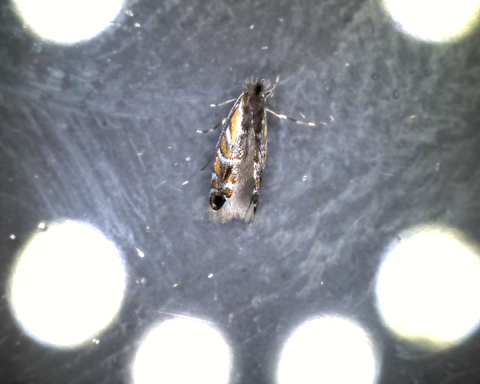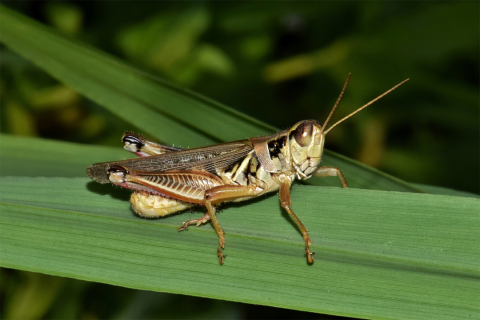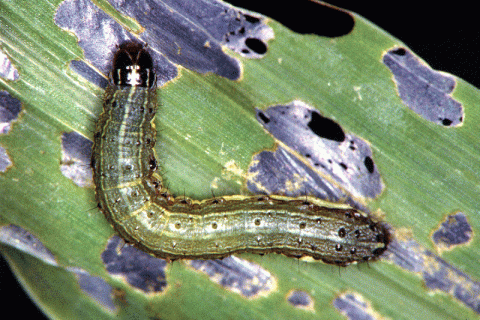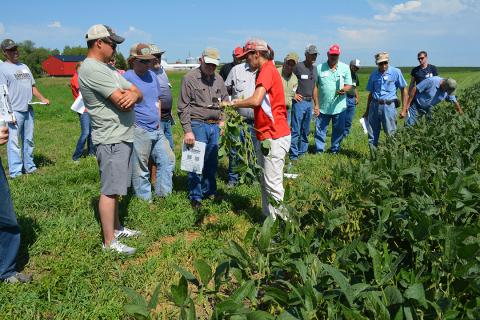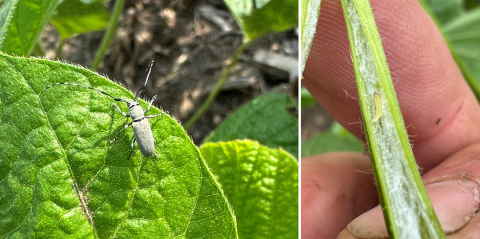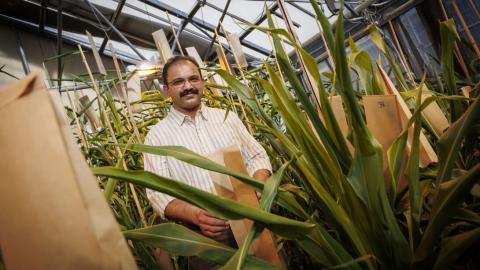
Husker Findings Boost Understanding of Sorghum’s Pest Resistance
October 25, 2024
UNL researchers have identified a hormone that boosts sorghum's resistance to the sugarcane aphid, offering a sustainable pest control option through enhanced natural defenses.
Soybean Tentiform Leafminer Found in Nebraska
October 10, 2024
A new soybean pest has moved into Nebraska — the soybean tentiform leafminer was positively identified in a Madison County field last month. At present, there are no known management methods for this insect.
Pasture and Forage Minute: Alfalfa Irrigation and Last Cutting, Grasshopper Management
September 12, 2024
Extension insights on fall alfalfa irrigation for improving yields, strategies for timing the last cutting to ensure winter survival, and grasshopper management to protect late summer forage from pest damage.
Arthropod Abundance in Industrial Hemp in West-central Nebraska
September 11, 2024
A diversity of both beneficial and potentially harmful insects has been found in industrial hemp grown in west-central Nebraska, and continued research will be crucial for producers in managing pests as hemp production expands in the state.
Pasture and Forage Minute: Tips for Fall Armyworm Scouting and Corn Silage Harvest
August 20, 2024
Recommendations on scouting and treatment thresholds for fall armyworm, control of late summer pasture weeds, and best practices for corn silage harvest and storage.
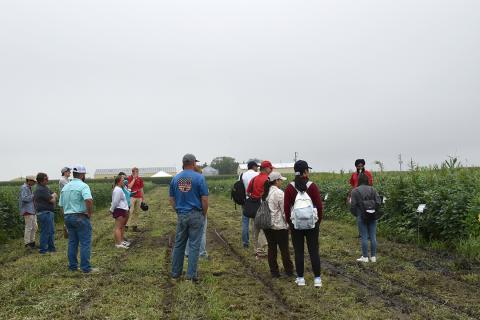
South Central Agricultural Lab Field Day Kicks Off Aug. 8
July 25, 2024
This year's SCAL Field Day features a live demonstration of John Deere's new camera-based weed detection technology, See and Spray™.
New Format for Nebraska Soybean Management Field Days
July 23, 2024
New in 2024, three of the four Soybean Management Field Days will be hosted during evening hours at sites across eastern and central Nebraska.
Dectes Stem Borer in Soybean
July 10, 2024
A difficult insect to manage, soybean stem borer has expanded its reach in Nebraska. This extension article reviews considerations for scouting and control options, plus resources for producers to learn more on this crop pest.
